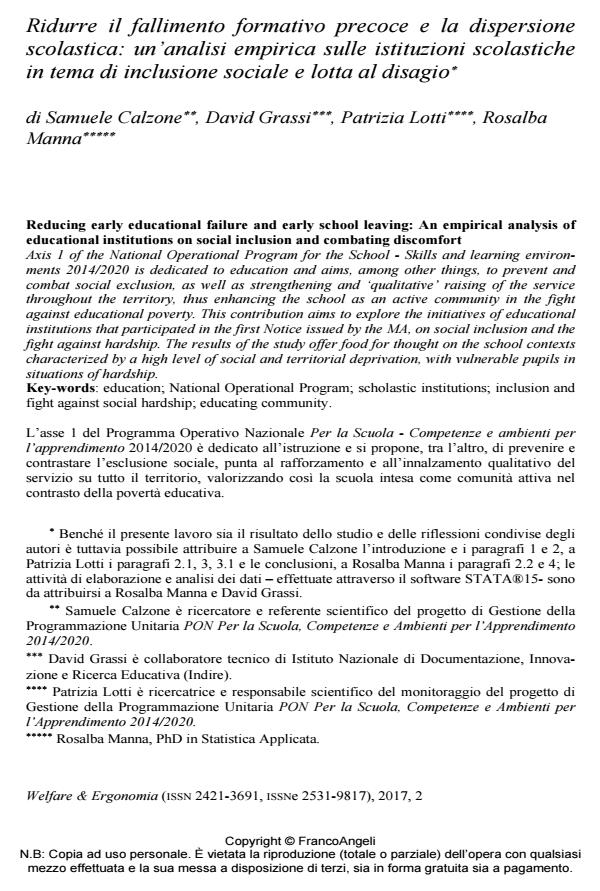Reducing early educational failure and early school leaving: An empirical analysis of educational institutions on social inclusion and combating discomfort
Journal title WELFARE E ERGONOMIA
Author/s Samuele Calzone, David Grassi, Patrizia Lotti, Rosalba Manna
Publishing Year 2019 Issue 2017/2
Language Italian Pages 25 P. 141-165 File size 455 KB
DOI 10.3280/WE2017-002008
DOI is like a bar code for intellectual property: to have more infomation
click here
Below, you can see the article first page
If you want to buy this article in PDF format, you can do it, following the instructions to buy download credits

FrancoAngeli is member of Publishers International Linking Association, Inc (PILA), a not-for-profit association which run the CrossRef service enabling links to and from online scholarly content.
Axis 1 of the National Operational Program for the School - Skills and learning environments 2014/2020 is dedicated to education and aims, among other things, to prevent and combat social exclusion, as well as strengthening and ‘qualitative’ raising of the service throughout the territory, thus enhancing the school as an active community in the fight against educational poverty. This contribution aims to explore the initiatives of educational institutions that participated in the first Notice issued by the MA, on social inclusion and the fight against hardship. The results of the study offer food for thought on the school contexts characterized by a high level of social and territorial deprivation, with vulnerable pupils in situations of hardship.
Keywords: Education; National Operational Program; scholastic institutions; inclusion and fight against social hardship; educating community.
Samuele Calzone, David Grassi, Patrizia Lotti, Rosalba Manna, Ridurre il fallimento formativo precoce e la dispersione scolastica: un’analisi empirica sulle istituzioni scolastiche in tema di inclusione sociale e lotta al disagio in "WELFARE E ERGONOMIA" 2/2017, pp 141-165, DOI: 10.3280/WE2017-002008